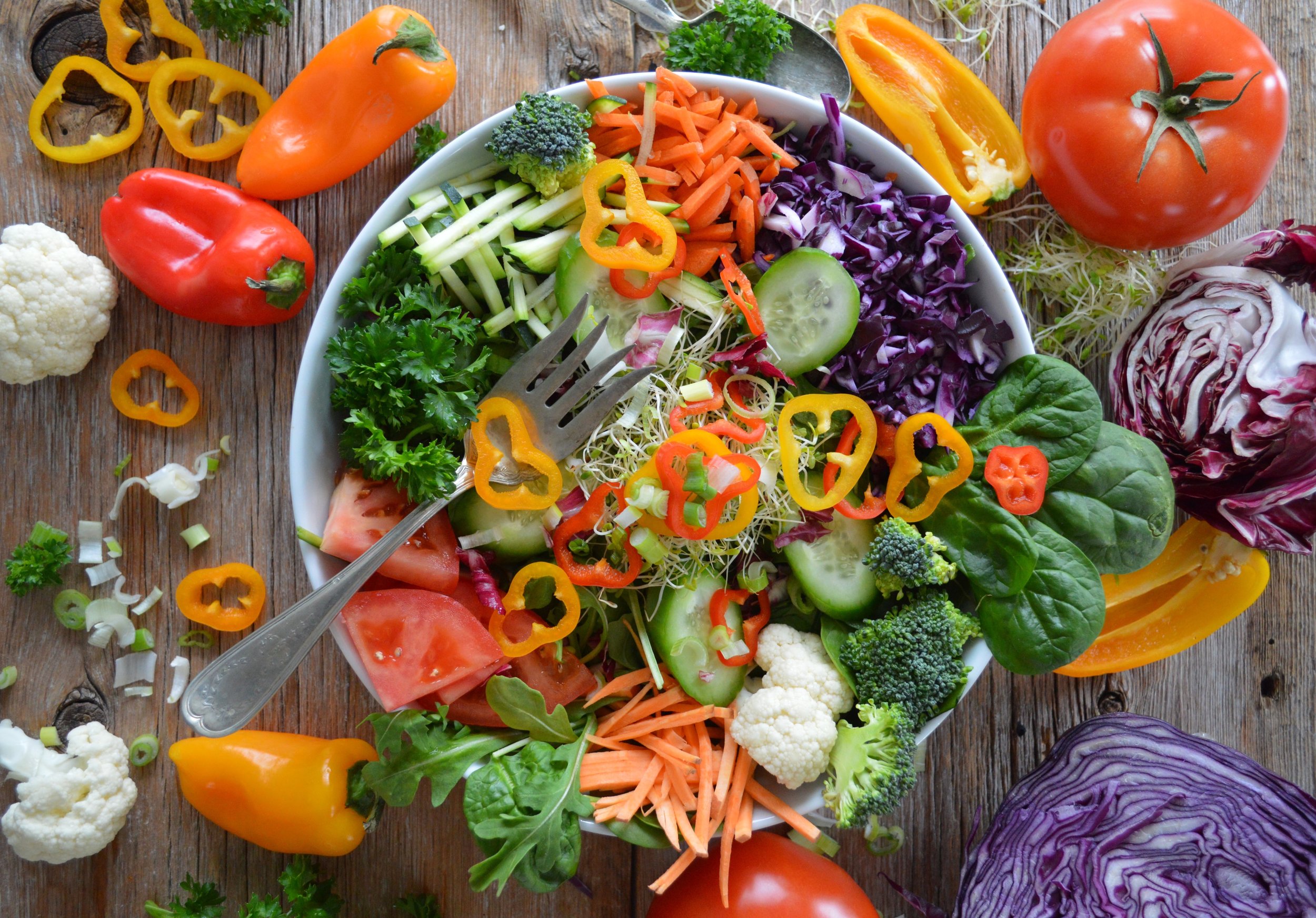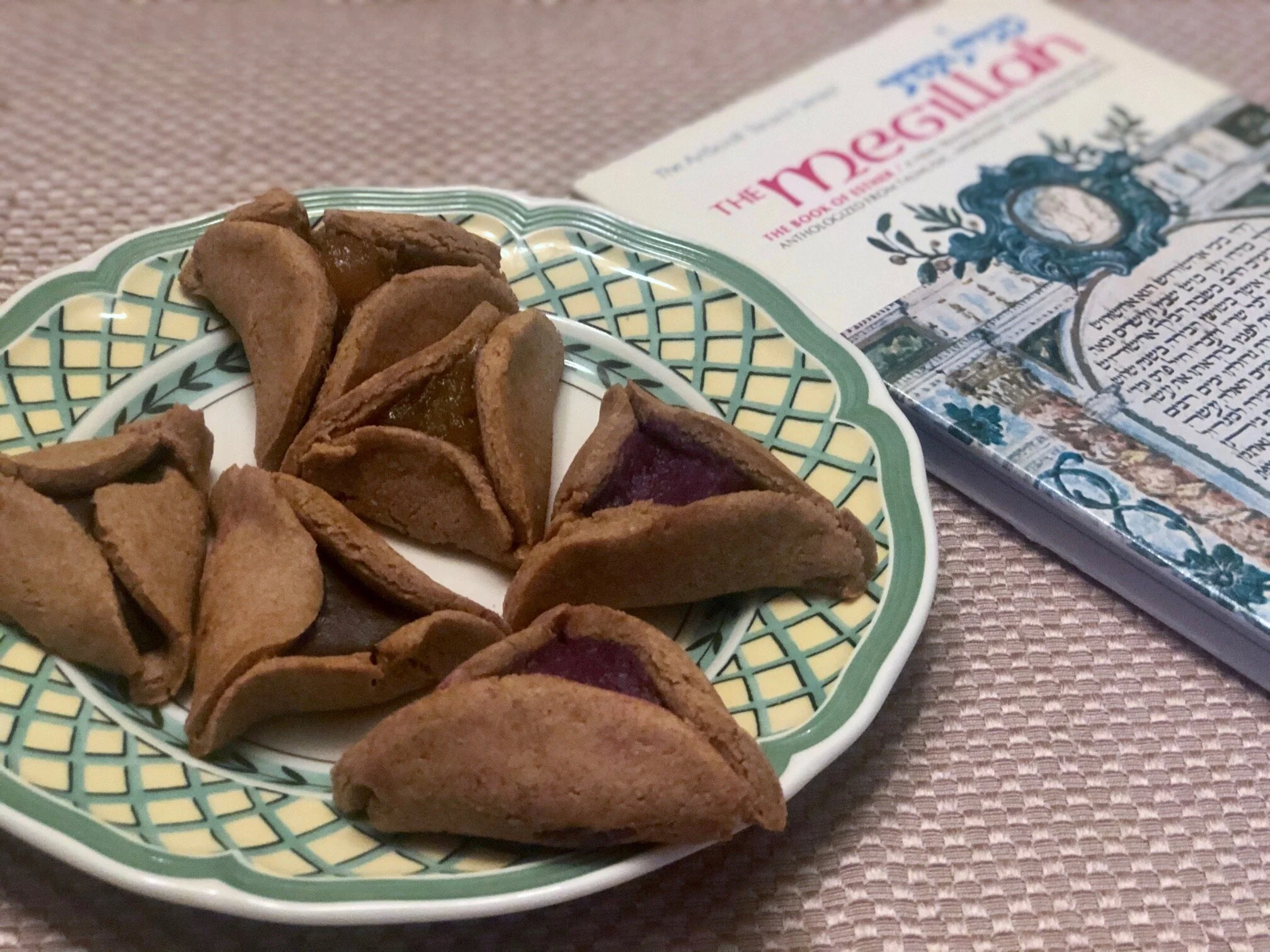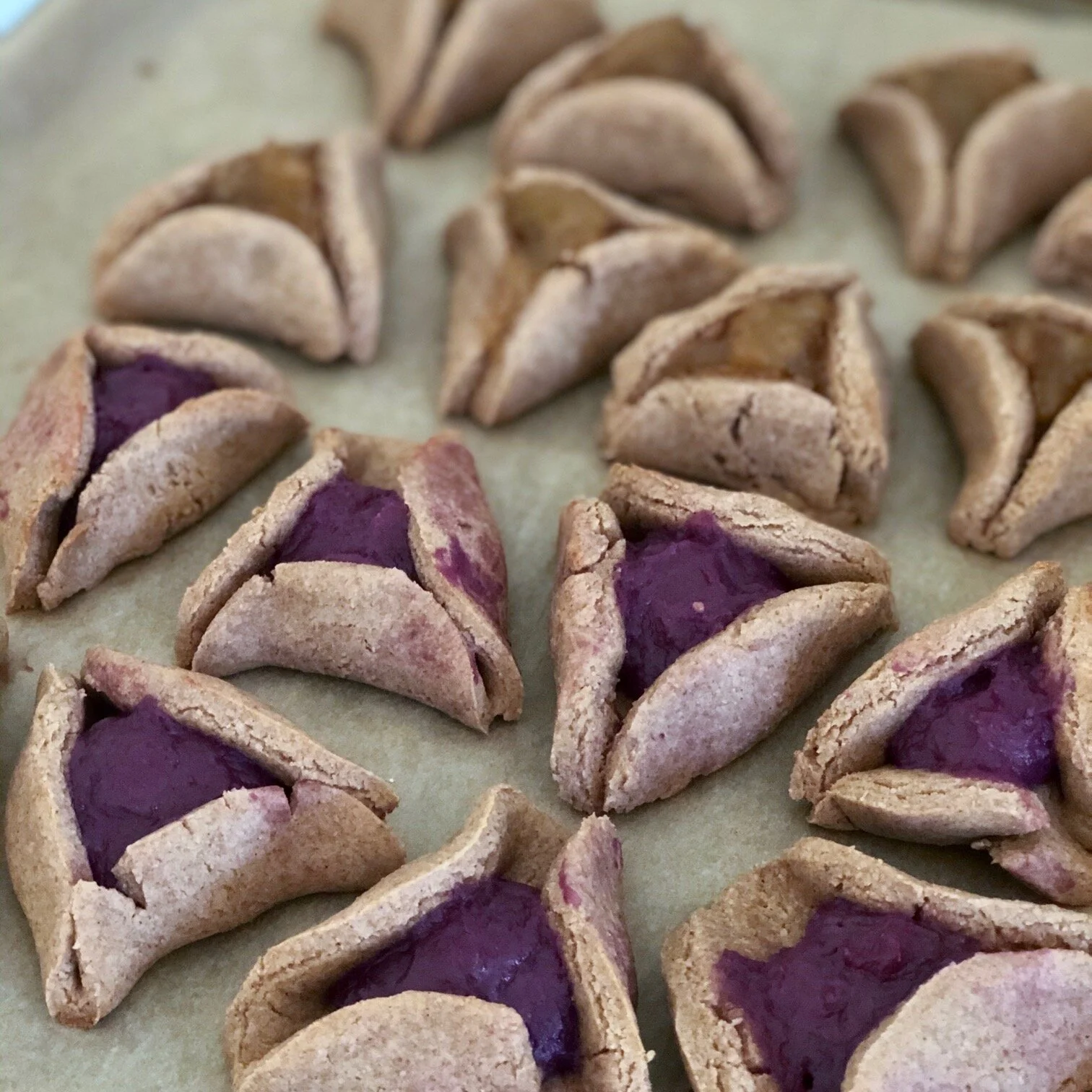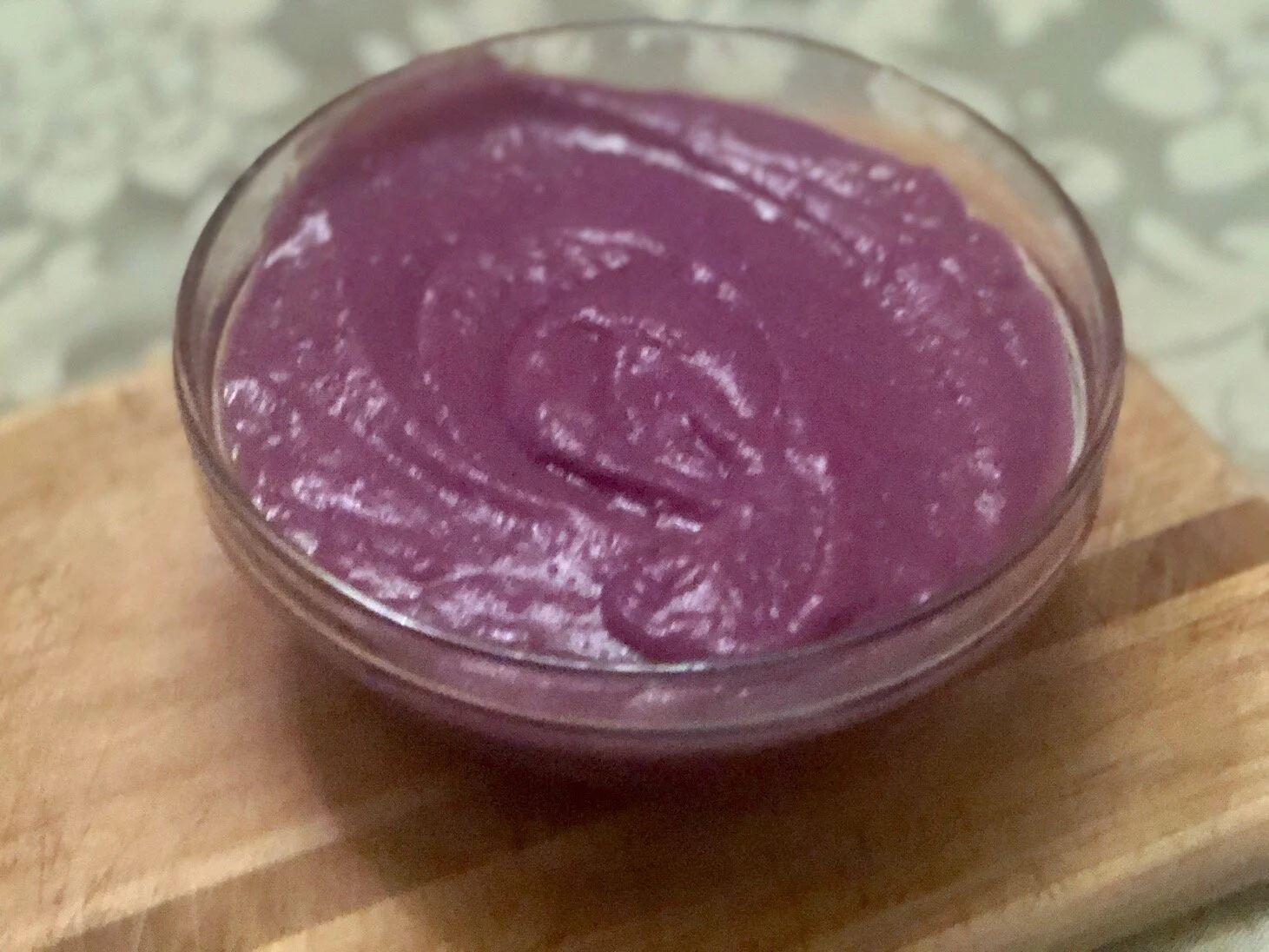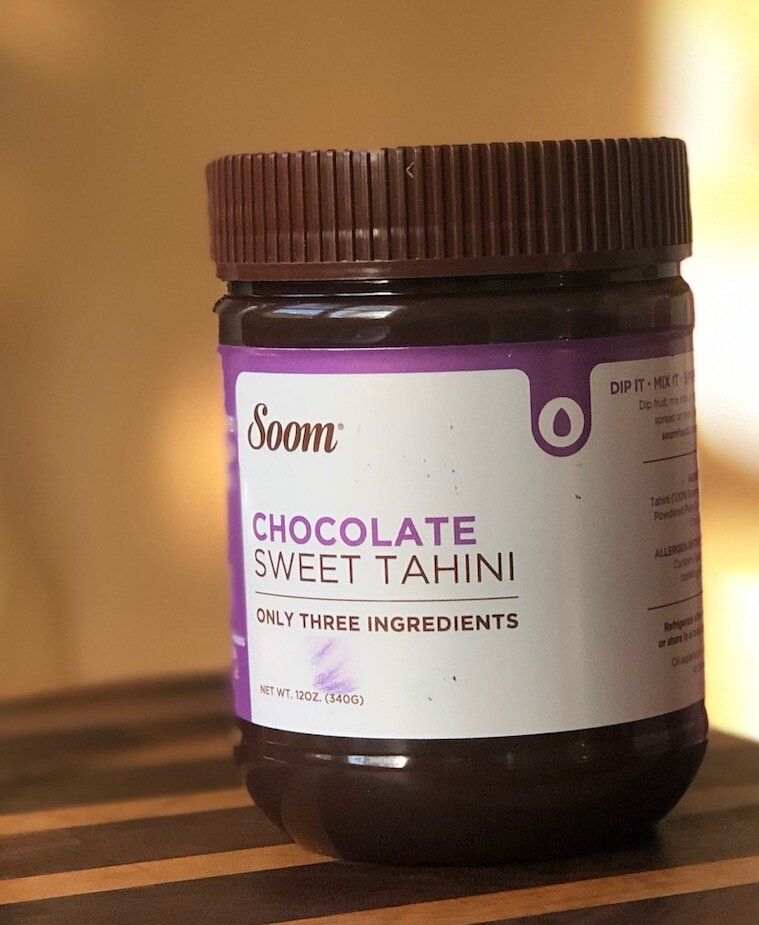Breathing New Life Into An Old Hamantaschen Custom
/Whole wheat and oat flour hamantaschen with three different fillings
As a people with a 3,500-year history, we Jews have a tendency to fossilize our customs and traditions: just because something’s been done a certain way for a thousand years, or a hundred, we keep doing it that way. This is true of Chanukah latkes, Passover recipes and Purim hamantaschen.
Hamantaschen as the Dominant Purim Custom
Tomorrow night is the Jewish festival of Purim. The most popular culinary custom, which is known worldwide, is to bake hamantaschen, which are three-cornered cookies that represent the ears (or the hat) of Haman, the villain of the Purim story. I grew up eating hamantaschen stuffed with poppyseeds, jam, prunes and even cheese.
However, where does it say in Megillat Esther (the Book of Esther) that we have to eat hamantaschen with a poppyseed or jam filling? The Megilla does not even mention hamantaschen! They are a German Jewish invention. The word itself comes from the German word “Mohntaschen,” which means “poppy seed pocket.” In the late 1500s, this got playfully turned into “Hamantaschen,” referring to the evil Haman’s pockets being filled with money taken from bribes.
In fact, the Jews of Persia have never even had a tradition to eat Hamantaschen! Persian Jews have their own unique and colorful Purim culinary customs. By next Purim, I hope to experience these Middle Eastern delicacies.
Now let's get to the point of this Purim post.
Experimenting with Hamantaschen
In the spirit of adventure and feeling untethered from strict hamantaschen orthodoxy, we made two different kinds of hamantaschen with three fillings that we had never tried before.
Although familiar, we felt that our fillings were in need of an overhaul.
Because, why not!
The Gluten-Free Almond Flour Recipe
Gluten -free almond flour hamantaschen
gluten-free almond flour hamantaschen
I’ve made hamantaschen with almond flour in the past. The experience has not measured up to what I would expect from a hamantaschen: they crumble easily, the flavor is not quite right and they quickly burn in the oven.
Therefore, I spent a considerable amount of time last week searching for a good gluten free, almond flour-based hamantaschen recipe. This is for two reasons: First, I am very sensitive to wheat. Second, as many of my regular readers can attest, I love to mix it up with alternative versions of common foods and recipes. Why make all of my recipes with the same four ingredients (wheat flour, eggs, oil and sugar) when there are so many more types of flour, spices and flavors to explore?
I discovered a very simple recipe from Eating By Elaine that we ended making with the kids. We loved the flavor and the texture of the finished product. My only gripe is that the dough was difficult to mold (although it’s possible that we messed up on our measurements somewhere).
After scrolling past so many perfect-looking Hamantaschen posts on Instagram, we just decided to make ours messy!
The Oat and Whole Wheat Flour Recipe
This hamantaschen, which I made based on a recipe from Melinda Strauss, uses whole wheat flour and oat flour. It makes a cookie that is lighter than the usual hamantaschen with which I grew up, while retaining some familiarity of taste.
Why oats? My younger son absolutely loves cooking and baking with oats. He even made up a recipe for oatmeal blueberry pancakes. Hamantaschen made with oats are are also easier on my stomach and my blood sugar levels than hamantaschen made from pure refined white flour.
Fun Hamantaschen Fillings
ube jam made from purple sweet potatoes
I am not a big fan of hamantaschen with a poppyseed filling. Going a bit non-traditional with our fillings opened us up to a much wider world of flavors, textures and ingredients. There is no reason not to explore new fillings. In fact, you could even expand the repertoire to savory hamantaschen! Rather than sticking to a formula, I see hamantaschen as a framework to build around, to be creative and expressive within the boundary of a 3-sided piece of dough.
We played with three different types of fillings:
Chocolate tahini made by Soom Foods. This tahini is so delicious and tastes like liquid halva! Plus, this is so much healthier than using Nutella.
Ube jam, a native Philippine dessert made from boiled and mashed purple sweet potatoes, that I learned how to make from my colleague Catherine Cheng
Etrog jam, also known as citron jam, made by a friend in my community, from fruit harvested from his citron tree
We used the same three fillings with both the almond flour hamantaschen and the oat and whole wheat hamantashen.
Hamantaschen are a Remarkable Template
Hamantaschen can be a versatile template for culinary experimentation. When you take an old tradition, unpack it a bit and switch up a few parts, you get something youthful and exhilarating.
What kinds of ingredients have you tried adding to your hamantaschen?

